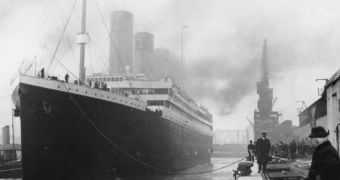Yesterday, May 31, the ill-fated RMS Titanic reached its 100th anniversary. The ship that would go on to become the world's most famous shipwreck was launched on May 31, 1911, by the Harland & Wolff shipyards, in Belfast, Northern Ireland.
The official “birth date” of a ship is its launch date, maritime historians say. The Titanic spent an extra year afloat before finally setting out on its first and last voyage. During these 12 months, Irish workers finished all the details on the immense vessel.
The US National Oceanic and Atmospheric Administration (NOAA) is commemorating the anniversary of the ship together with the international community, since the wreck is now an archaeological site, as defined by the United States Archaeological Resources Protection Act.
The large boat set sail from the English city of Southampton to New York on April 10, 1912, carrying about 2,223 passengers aboard. Just four days later, as it was navigating the treacherous waters of the North Atlantic, it hit a massive iceberg.
The event took place at 11:40 pm local time, on April 14. Subsequently, more than 1,517 of the people on board lost their lives by drowning. Only a small proportion of the passengers managed to survive in the freezing waters, inside lifeboats.
Following the monstrous accident, the international community agreed on the International Convention for the Safety of Life at Sea, as well as other measures concerning international laws on safety of navigation.
In addition, the United Nations decided to found the International Maritime Organization (IMO), whose goal is even now to prevent ships from polluting marine environment. It is also responsible for maintaining the world's ship safe in international waters.
Even though the sinking of the Titanic was one of the most publicized events at the time, it wasn't until more than 70 years later, in 1985, that a joint expedition by the United States and France found the wreck site and the decaying ship.
“The wreck site of Titanic is a powerful, tangible link to the events of April 15, 1912, and very much a reminder of those who built, launched, sailed on, died on, or survived the sinking,” says the chief scientist of a 2010 NOAA mission to the Titanic, James Delgado.
“A hundred years later, their stories still have relevance and speak to us from the depths through their personal effects and the power of archeology,” adds the expert, who is also the director of the NOAA Office of National Marine Sanctuaries Maritime Heritage Program.

 14 DAY TRIAL //
14 DAY TRIAL //